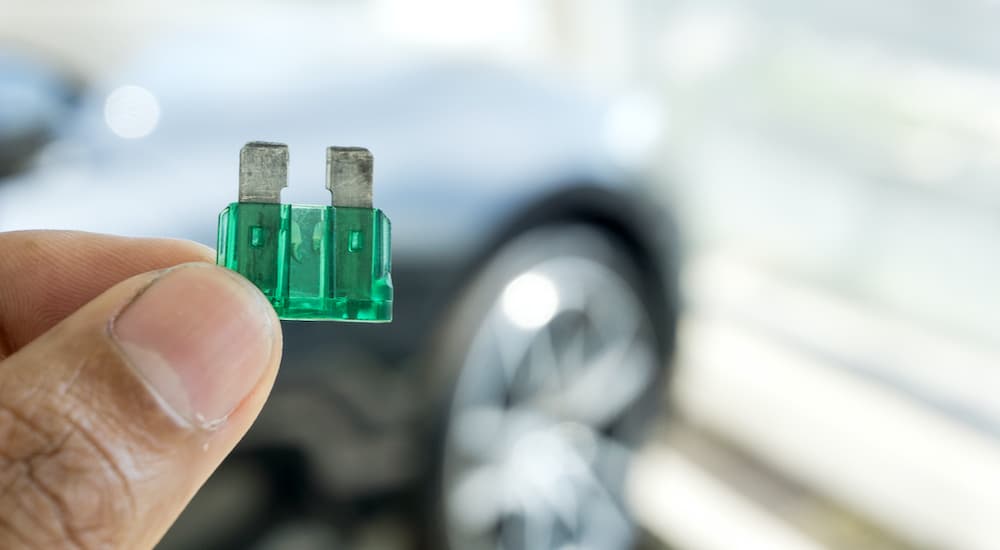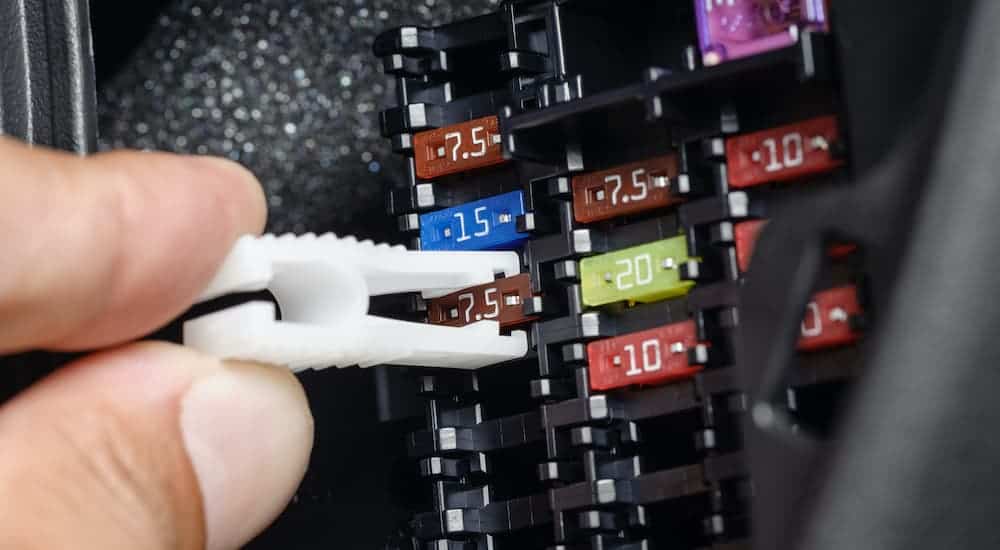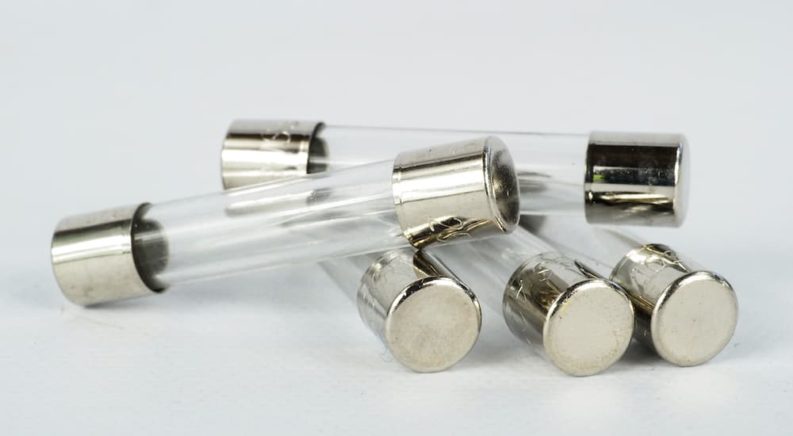When working on your own vehicle, it’s important to recognize that there are some projects that require a great deal of expertise and should be handled either by a professional or only once you have a lot of experience with auto repairs and maintenance. Just as important, however, is realizing that other projects are remarkably simple and that you can tackle these sorts of things yourself with very little previous experience. Being able to find, recognize, check, and replace a car fuse for an electrical system in your vehicle is one such project.
Your car has a number of fuses, usually around a few dozen, which are all used to help protect the various electrical systems in your vehicle. When something that’s a part of your car’s electrical system, like the wipers, radio, or lights, stops working, there’s a pretty good chance you could have a burnt-out fuse. Today, I’m going to explain what fuses are, what they do, go over different types of fuses, and talk about what to do if you think you have a burnt fuse. Trust me – it’s all quite simple.
What is a Car Fuse?
Let’s start with some car fuse basics. First off, to understand what a fuse is and why your car has them (and lots of them), let’s talk about the basics of how your car operates. Unless you are driving a hybrid or electric vehicle, the battery in your car doesn’t really do much – the battery has one essential job: provide power to your starter so your engine can start. Once your engine starts, the alternator in your vehicle uses energy from the engine and turns it into electrical energy that charges the battery and powers the different electrical systems in your vehicle: lights, radio, etc.
The movement of electrical energy is called “current.” Think of it like a river: you look at a river and talk about the strength of its current in reference to how quickly the water is moving. Similarly, a high electrical current means more charge is moving through a system. Electrical current is measured in amperes, or “amps.”
So, a car fuse – or any kind of fuse, really – exists in an electrical system to protect delicate parts from an electrical surge, a surge in current. A power surge can happen for many different reasons, and if a large current reaches something like a speaker, audio player, air conditioner, or another electronic device, it can damage or even destroy that device. To prevent this, a fuse is placed in the system between the power supply and the electronic device.
Every fuse in your car is essentially a thin piece of wire that allows electric current to flow from your alternator to a specific component, like your speakers. The material used in that wire, however, is specially chosen so that if a current over a set amount reaches it, it will burn out the wire and destroy it. This breaks the circuit in your car’s electrical system and means the power surge never reaches the device – it destroys the car fuse, which is very cheap to replace, rather than damaging a more costly device or component.
Different Types of Car Fuses
With American cars, you’ll typically encounter one of two types of car fuses, depending on the age of your vehicle. Older cars – before the mid-1980s – typically have glass tube fuses. These are small cylinders, with a glass tube in the middle and metal caps on each end. They measure different lengths to indicate their maximum amp rating, but you won’t find these on newer vehicles.
Instead, newer cars use blade type fuses, which look like a small rectangle of plastic, with two metal blades coming out one end. These blades go down into a fuse box where dozens of them can easily fit together in a small area. There are several different sizes of these types of fuses available, including “maxi” fuses designed for heavy currents, “regular” fuses that are slightly smaller, “mini” fuses that are smaller still, and “micro” fuses that are the smallest ones.
All blade type fuses have their amp rating clearly indicated in two different ways: a printed number and their color. When you look at the top of a blade fuse, you can see a number – this is the current it’s rated for in amps. The color of the fuse will also tell you its rating. For instance, a yellow blade type car fuse is rated for 20 amps, while a black blade fuse is rated for 1 amp. This makes replacing a burnt-out car fuse quite simple if you know the color codes.

What Happens if a Car Fuse Burns Out?
When a car fuse burns out, the current from your car’s alternator or other power supply won’t be able to reach the electrical system the fuse was a part of. So if one set of lights stops working, but your car is otherwise functioning normally, then there’s a pretty good chance that the fuse for those lights has burnt out. This isn’t dangerous, and it doesn’t cause damage to your vehicle; it just means the system the fuse was a part of won’t work until you replace the fuse.
How Can I Tell if a Car Fuse Burns Out?
There are a couple of different ways to test to see if a car fuse has burnt out. If you think you have a burnt fuse, then check your vehicle’s owner’s manual to see where the fuse box is located. You might only have one, though a lot of cars have two or even three. Some vehicles will have the fuse box under the hood with the engine, while it can be located in the cabin under the dashboard in other models – and some even have the fuse box under the rear seats.
Then, you can use an automotive test light or a multimeter to test individual fuses without removing them from the fuse box. Or, simply pull a suspected burnt fuse from the box and take a look at it – use either needle-nose pliers or a fuse puller to do this without damaging the fuse or your vehicle. The fuse box lid will have a diagram showing what system each fuse is part of, so you can find the suspect pretty easily.
While looking at a fuse, you can easily tell if it’s still good or if it’s burnt out. With both glass cylinder and blade type fuses, you can see the wire inside the fuse that the charge runs through. If the wire is intact, then the fuse is fine. If the fuse has burnt out, then the wire will literally be burnt and split in two from the damage caused by the power surge.

How Do I Replace a Car Fuse?
Once you’ve figured out which fuse has burnt out, all you have to do is pull the fuse from the box and replace it with the same type of fuse. It’s very important that you replace it with both the same style, glass cylinder or blade type, and the same rating. If you pull a regular-size blade fuse from the box and it is green and has “30” printed on the top of it, then you need to replace it with another green 30-amp regular-size blade fuse.
You can find new car fuses at pretty much any auto supply store or order them online through your retailer of choice. They’re not hard to find, and they are very inexpensive. In fact, there might even be replacement fuses in your vehicle’s fuse box, so check that before buying a new one. Just be sure to replace the replacement so that you’ll have one ready for next time.
And there you have it: fuse replaced and your car’s electrical system running properly again. If this doesn’t work, then the issue might be more severe than a burnt fuse. Also, if the replaced fuse burns out again quickly, then you might have a larger problem with your alternator or electric system. If you find yourself replacing fuses regularly, you should have your car checked out by a certified professional before anything more important than a fuse is damaged.

